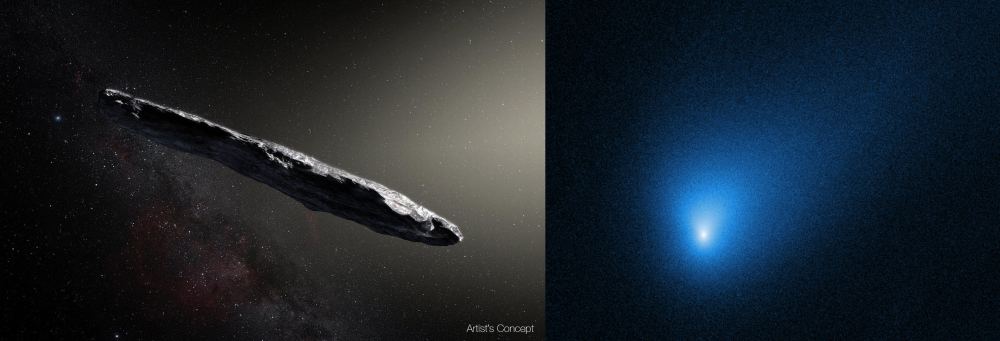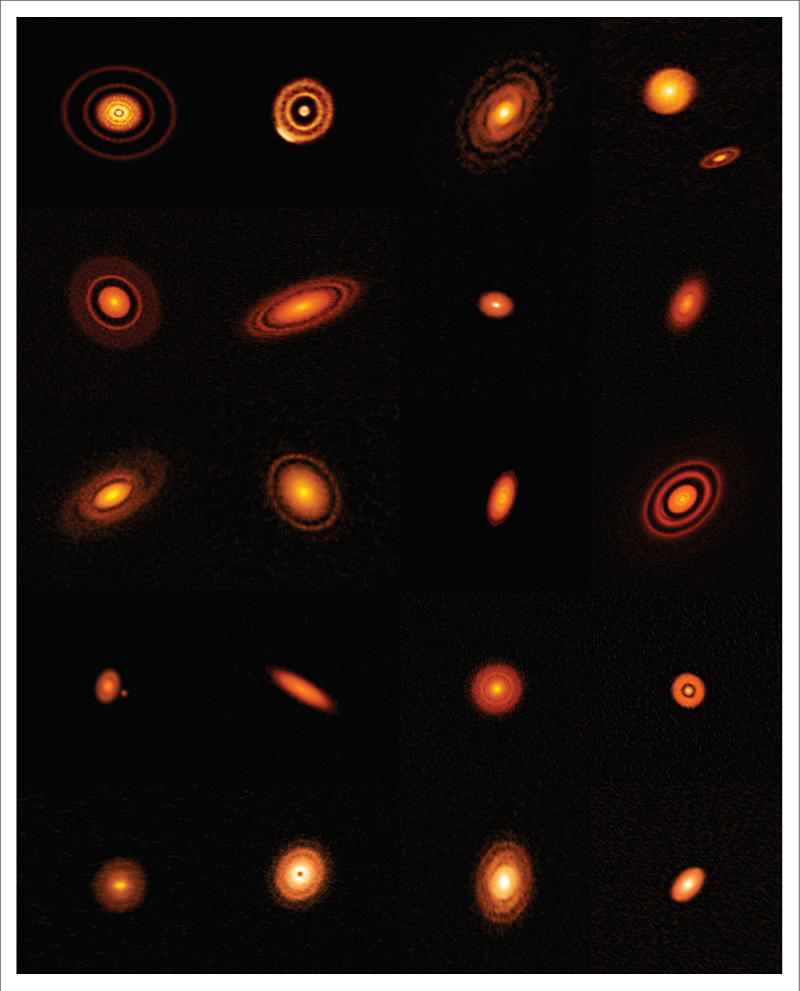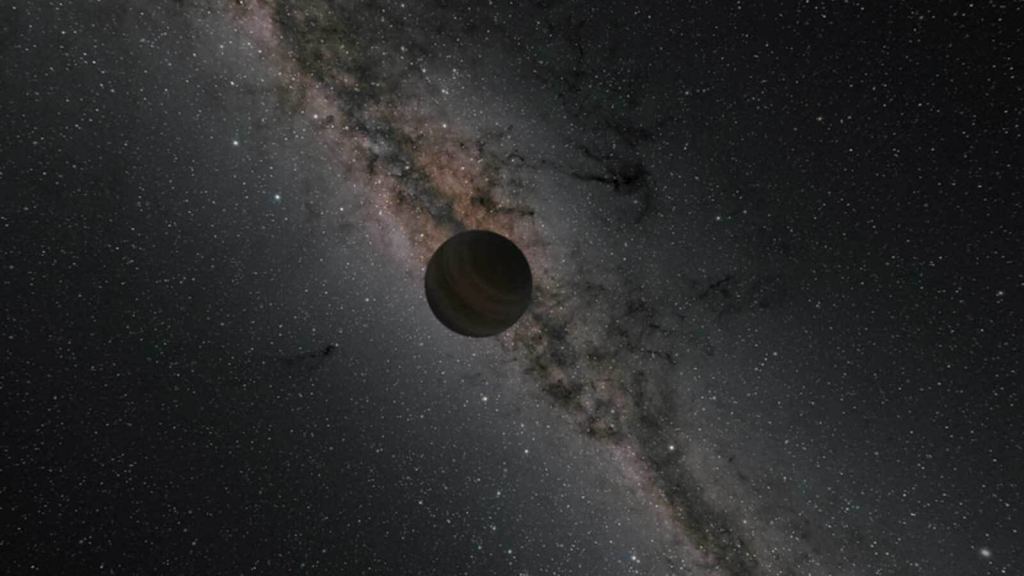When a young solar system gets going it's little more than a young star and a rotating disk of debris. Accepted thinking says that the swirling debris is swept up in planet formation. But a new study says that much of the matter in the disk could face a different fate.
It may not have the honour of becoming part of a nice stable planet, orbiting placidly and reliably around its host star. Instead, it's simply discarded. It's ejected out of the young, still-forming solar system to spend its existence as interstellar objects or as rogue planets.
The study comes from Avi Loeb and Amir Siraj, names that may be familiar to Universe Today readers. Loeb and Siraj are both from the Center for Astrophysics (CfA) at Harvard and have collaborated on research before. Their new study is titled " Preliminary Evidence That Protoplanetary Disks Eject More Mass Than They Retain." It's available on the pre-print site arxiv.org and hasn't been peer-reviewed yet.
Loeb and Siraj point to the existence of interstellar objects like Oumuamua and 2I/Borisov to make their case. So far, there's no conclusive proof for the origin of these objects and their brethren. Researchers have come up with different origins, and have brought evidence to bear, but so far there's no consensus. Oumuamua could be an interstellar dark hydrogen iceberg, an object similar to Pluto, or even a type of interstellar 'dust bunny.' And comet 2l/Borisov is likely a rogue interstellar comet, the first one we've observed.
Stellar mass budgets show that neither exo-Oort Clouds nor protoplanetary disks can provide enough mass to explain interstellar objects and the rogue planet population. So maybe our stellar mass budgets are wrong? Maybe the bulk of the material in protoplanetary disks is ejected and becomes interstellar objects like 'Oumuamua, 2I/Borisov, and rogue planets, with some of those planets being many times larger than Earth.
Much of the paper is based on scientific estimations, and much of it is preliminary. The authors make that clear in the paper's title. Scientists don't yet have a clear understanding of how many interstellar objects and rogue planets there are. But you have to start somewhere, and this paper is a kind of starting point.
Their paper opens with, "If interstellar objects originate in protoplanetary disks, they can be used to calibrate the fraction of mass that such disks eject." From there they dig deeper.
"The origin of interstellar objects is an unsolved mystery," they write. "Neither exo-Oort clouds nor protoplanetary disks are capable of filling the mass budget necessary to produce the inferred interstellar object population." That only leaves two broad possibilities for their origins. One is different stellar mass budgets, which may be implausible. The other is different survival probabilities for interstellar objects across vast distances and time scales.
This preamble sets up the researchers' main question: "How much mass per star is required to produce interstellar objects?"
The first hurdle in the way of answering that question is the fact that we only really know about two interstellar objects: 'Oumuamua, which was discovered in 2017, and comet 2I/Borisov, which was discovered in 2019. And scientists only have observed estimates for their sizes. 'Oumuamua is estimated to be between 20 to 200 meters, and Borisov's nucleus is estimated to be between 0.4 to 1 km. There's also a third potential interstellar object named CNEOS 2014-01-08, but its status as an interstellar object is not confirmed.
We only have estimates of how many of these interstellar objects there are, including rogue planets. For objects like 'Oumuamua and Borisov, the estimate is somewhere around 9,000 per star, while for rocky rogue planets roughly twice the size of Earth, it's between about 5 to 10 per star. (Some estimates say there are fewer, only 2 per star.)
The pair of researchers took what data there is, as well as the estimates, and ran a simulation. The simulation addressed their main question: "Given the sizes and abundances of known interstellar objects, how much mass is required, per star, to produce such a population?"
For each size and abundance estimate for interstellar objects, the pair ran Monte Carlo simulations. The results?
Siraj and Loeb found that exo-Oort clouds cannot contain enough mass to be the source of the inferred populations of interstellar objects and rogue planets. The pair present their calculations in the paper then state that "As a result, Oort
clouds of stars are implausible sources of interstellar objects."
Next, they consider protoplanetary disks. Their calculations are presented in detail in their paper and are worth looking into for those with a deeper interest in this issue. But the end result is that it may take a larger proportion of host star mass than previously thought to account for the inferred population of interstellar objects larger than 'Oumuamua. "The primary implication of these results is that the amount of mass needed to form interstellar objects larger than 'Oumuamua is a substantial fraction of host star mass, between 2% and 50%."
In the background of all of Loeb's and Siraj's work is something called the Minimum Mass Solar Nebula (MMSN) model. The MMSN model describes the composition of the material in our Solar System needed to account for the formation of the planets, and asteroids, orbiting the Sun. The MMSN shows that, given the Sun's metallicity, about 1% of the Sun's mass was needed to form the planets.
The authors' calculations and simulations show that it takes a substantially larger fraction of a star's mass to account for the population of 'Oumuamua-like objects. "The primary implication of these results is that the amount of mass needed to form interstellar objects larger than 'Oumuamua is a substantial fraction of host star mass, between 2% and 50%."
If you're thinking that's a rather large range, you're right. But what their work accomplishes is a tighter constraint on our understanding of the formation of planetary systems. "These results suggest a highly efficient route for converting protostellar matter into ~ 0.1 km planetesimals and for ejecting them from their parent stars, and changes the paradigm regarding observational constraints on the planetary system formation process."
But what might be most interesting is the potential conclusion. Young solar systems may eject more mass as interstellar objects and rogue planets than they retain.
"Neither the mass budget of the solar system's protoplanetary disk nor the observed protoplanetary or debris disks around other stars could provide sufficient material for the formation of interstellar objects," Siraj and Loeb write in their summary.
The pair end their paper by mentioning how these objects could be ejected from their host systems. But that's largely a sort of sidebar. The pair of researchers are more interested in how this changes our understanding of solar system formation.
They point out that the upcoming Vera Rubin Survey Telescope could potentially find many more interstellar objects, since the Vera Rubin will excel at discovering transient phenomena. This study is limited by a tiny sample size of only two, or possible three, interstellar objects. Once we have a larger sample size, we'll know a lot more.
"The origins of interstellar objects can be inferred through their velocity distribution, once a sufficient number of them have been detected," the authors write.
 Universe Today
Universe Today



